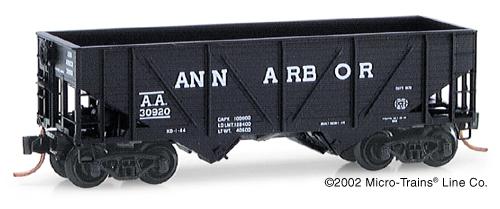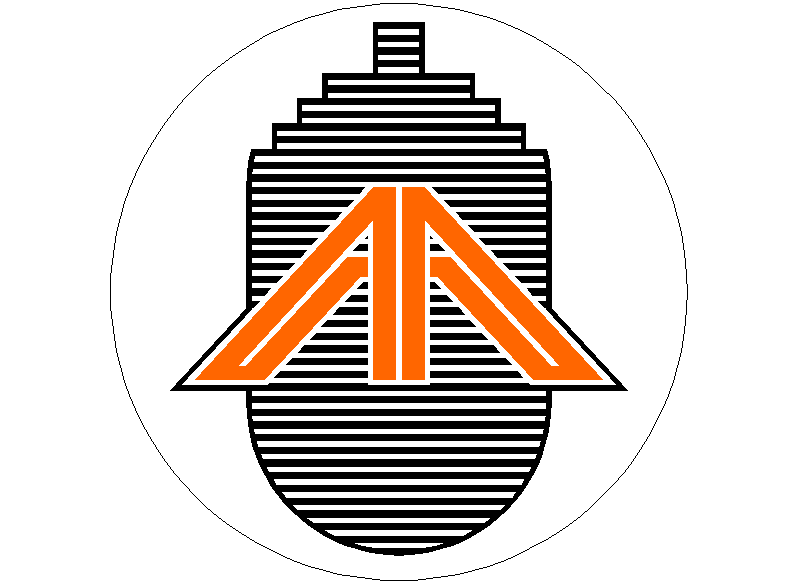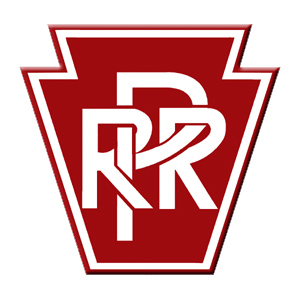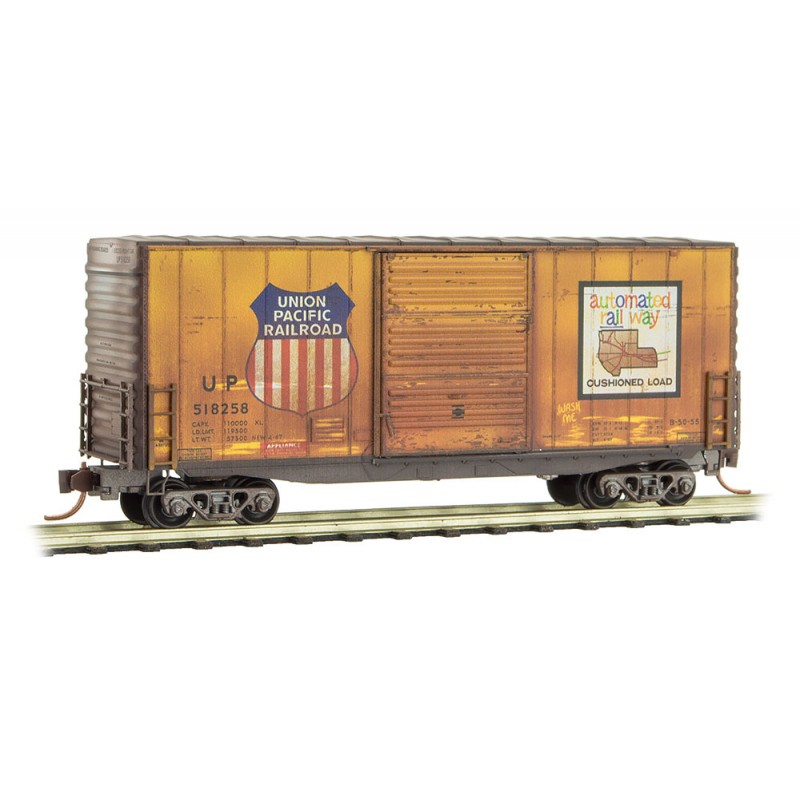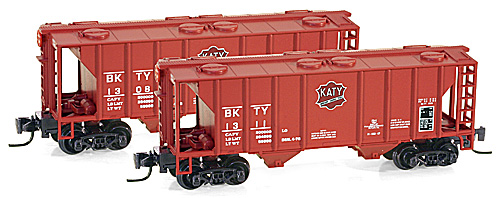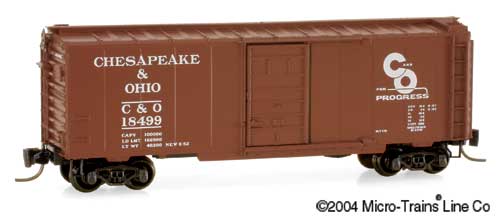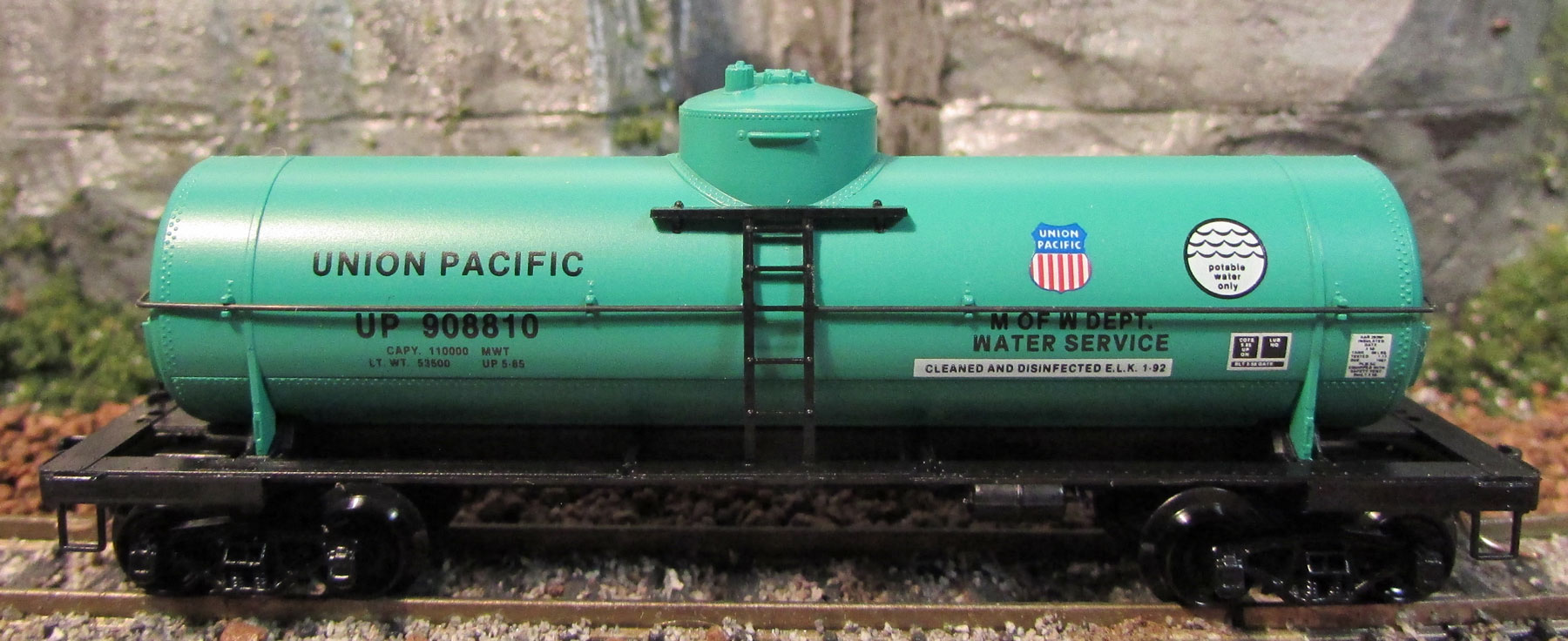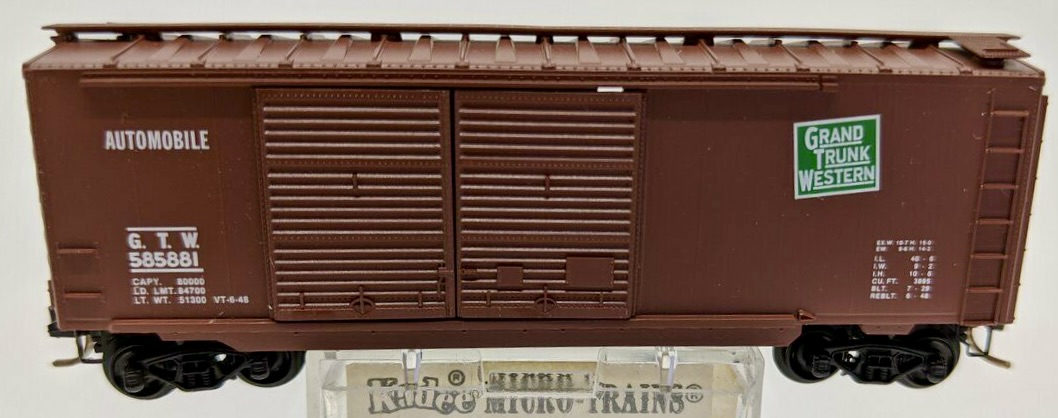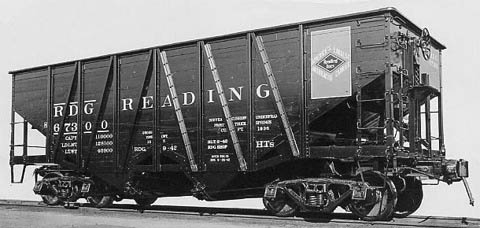Prototype History: The story of these 2-Bay War Emergency Hoppers begins in 1942 when the War Production Board directed car builders to substitute wood for steel wherever possible in car superstructures. The familiar 2-Bay War Emergency Composite Hopper was a result of this directive. Those cars had wooden side sheets and end slope sheets (although the middle slope sheets remained steel.)
The wood siding was thicker than comparable steel sheeting and this reduced the capacity of the cars. While you could build ten composite cars with the steel from nine all-steel cars, it took more composite cars to move the same amount of coal. This combined with the more frequent repairs required by the composite cars soured the War Production Board on the design.
During 1944, the directive was set aside and cars that were on order were delivered with the familiar diagonal bracing but with all steel construction. After the war, as composite cars came due for serious maintenance, the wood side and slope sheets were replaced with steel. A large majority of the composite cars were rebuilt in this manner sometime during the 1950s.
From Bluford Shops
The wood siding was thicker than comparable steel sheeting and this reduced the capacity of the cars. While you could build ten composite cars with the steel from nine all-steel cars, it took more composite cars to move the same amount of coal. This combined with the more frequent repairs required by the composite cars soured the War Production Board on the design.
During 1944, the directive was set aside and cars that were on order were delivered with the familiar diagonal bracing but with all steel construction. After the war, as composite cars came due for serious maintenance, the wood side and slope sheets were replaced with steel. A large majority of the composite cars were rebuilt in this manner sometime during the 1950s.
From Bluford Shops
Road Name History: Ann Arbor was formed in 1895 to reorganize the bankrupt Toledo Ann Arbor & North Michigan. It ran from Toledo, Ohio through Ann Arbor, Michigan northwest to the coast of Lake Michigan at Frankfort. There, railroad car ferries forwarded the traffic to four ports across the lake. The rail portion was almost exactly 300 miles. Detroit Toledo & Ironton had control of the company between 1905 and 1910. In 1925, the Wabash took control of the Ann Arbor. As diesels began to arrive (mostly Alco FA's and RS1s) they came in Wabash blue, gray and white but with Ann Arbor lettering and a "marine" version of the flag on the nose. This is where it gets a bit complicated.
Wabash was controlled by the Pennsylvania Railroad who, in the early 60s, was planning their merger with the New York Central. They knew they would not be permitted to control Wabash through the merger and began arranging marriages to limit any negative impacts. They arranged for Wabash (whom they controlled) to be leased by Norfolk & Western (whom they didn't control but had considerable influence over) as part of N&W’s consolidation with Nickel Plate, Akron Canton & Youngstown, and Pittsburgh & West Virginia. For some reason, Ann Arbor was to stay in the PRR sphere and not go with the Wabash. So prior to that merger, Wabash sold the Ann Arbor to the Detroit Toledo & Ironton (whom PRR also controlled.) That was in 1963. At that point, AA traded in their blue, gray and white for DT&I orange with Ann Arbor lettering. As the 60s pressed on, demand for cross-lake ferry rail service dwindled until only the two Wisconsin routes remained. By 1972, AA was down to 15 locomotives. A year later, they declared bankruptcy. The line operated in receivership until April 1, 1976 which was Conrail's first day of operation. After a short time, Conrail announced that it wasn't interested in operating any AA route north of Ann Arbor, but the state of Michigan wanted to keep the road together. So Michigan Interstate took over as the designated operator of the Ann Arbor Railroad. “Michigan Interstate Railway Company Operator” lettering was applied to the short hoods of many AA locomotives. In 1982, all ferry operations ended and the following year AA was split between the Michigan Interstate, the Michigan Northern and the Tuscola & Saginaw Bay (later the Great Lakes Central.) Then in 1988, a new company bought the section from Toledo to Ann Arbor. That is the current "Ann Arbor Railroad." Ann Arbor joined the Watco shortline group in 2013.
The Ann Arbor Railroad owned a subsidiary, the Manistique and Lake Superior Railroad (M&LS), from somewhere shortly after that line's origin in 1909 until it was abandoned in 1968.
The Ann Arbor Railroad owned a subsidiary, the Manistique and Lake Superior Railroad (M&LS), from somewhere shortly after that line's origin in 1909 until it was abandoned in 1968.
Brand/Importer Information: Micro-Trains is the brand name used by both Kadee Quality Products and Micro-Trains Line. For a history of the relationship between the brand and the two companies, please consult our Micro-Trains Collector's Guide.
Manufacturer Information:  Micro-Trains Line split off from Kadee Quality Products in 1990. Kadee Quality Products originally got involved in N-Scale by producing a scaled-down version of their successful HO Magne-Matic knuckle coupler system. This coupler was superior to the ubiquitous 'Rapido' style coupler due to two primary factors: superior realistic appearance and the ability to automatically uncouple when stopped over a magnet embedded in a section of track. The success of these couplers in N-Scale quickly translated to the production of trucks, wheels and in 1972 a release of ready-to-run box cars.
Micro-Trains Line split off from Kadee Quality Products in 1990. Kadee Quality Products originally got involved in N-Scale by producing a scaled-down version of their successful HO Magne-Matic knuckle coupler system. This coupler was superior to the ubiquitous 'Rapido' style coupler due to two primary factors: superior realistic appearance and the ability to automatically uncouple when stopped over a magnet embedded in a section of track. The success of these couplers in N-Scale quickly translated to the production of trucks, wheels and in 1972 a release of ready-to-run box cars.
Micro-Trains Line Co. split off from Kadee in 1990 to form a completely independent company. For this reason, products from this company can appear with labels from both enterprises. Due to the nature of production idiosyncrasies and various random factors, the rolling stock from Micro-Trains can have all sorts of interesting variations in both their packaging as well as the products themselves. When acquiring an MTL product it is very important to understand these important production variations that can greatly enhance (or decrease) the value of your purchase.
Please consult our Micro-Trains Collector's Guide

Micro-Trains Line Co. split off from Kadee in 1990 to form a completely independent company. For this reason, products from this company can appear with labels from both enterprises. Due to the nature of production idiosyncrasies and various random factors, the rolling stock from Micro-Trains can have all sorts of interesting variations in both their packaging as well as the products themselves. When acquiring an MTL product it is very important to understand these important production variations that can greatly enhance (or decrease) the value of your purchase.
Please consult our Micro-Trains Collector's Guide
Item created by: Lethe on 2015-05-31 17:46:30. Last edited by George on 2024-01-26 20:28:48
If you see errors or missing data in this entry, please feel free to log in and edit it. Anyone with a Gmail account can log in instantly.
If you see errors or missing data in this entry, please feel free to log in and edit it. Anyone with a Gmail account can log in instantly.


